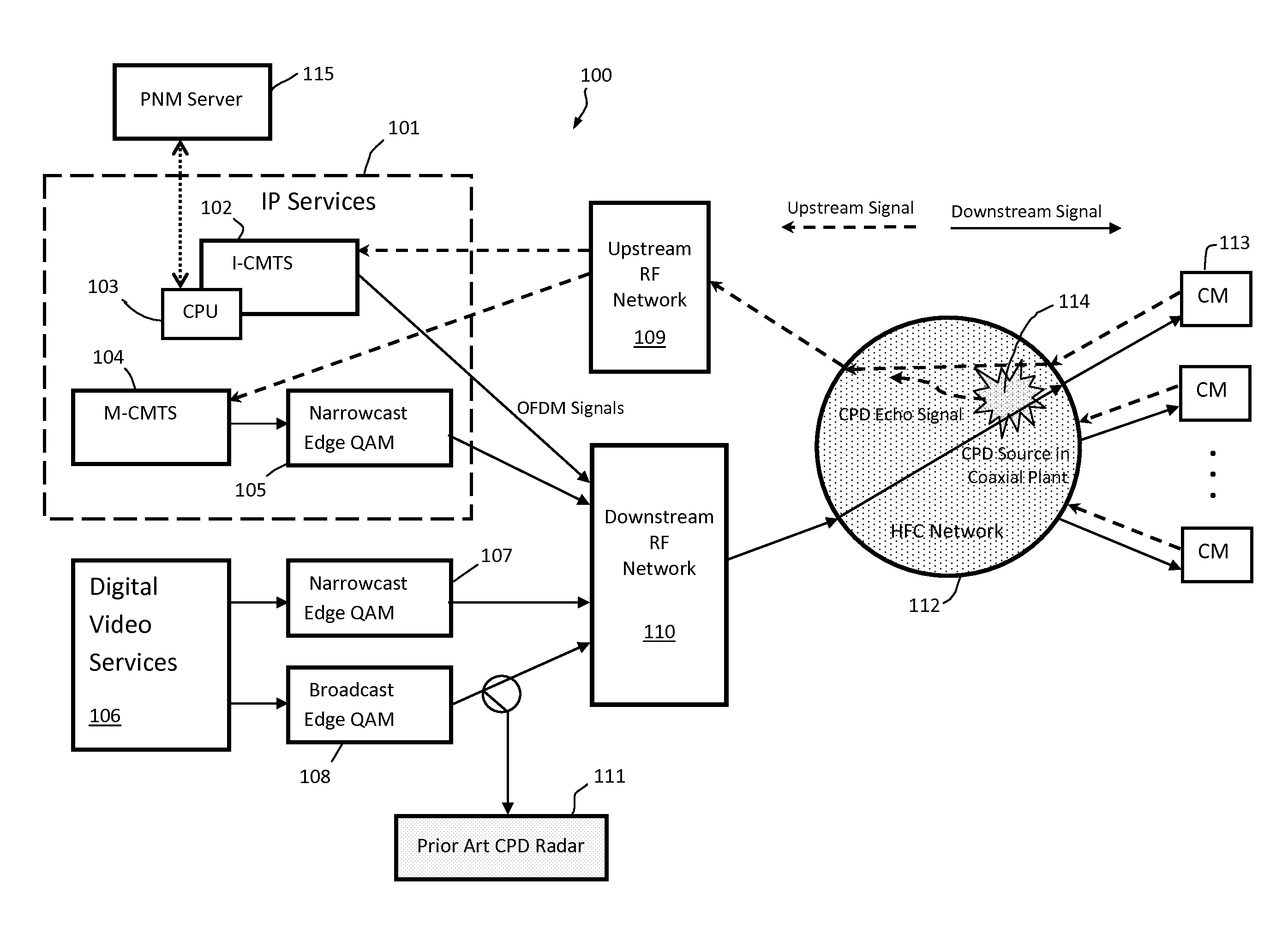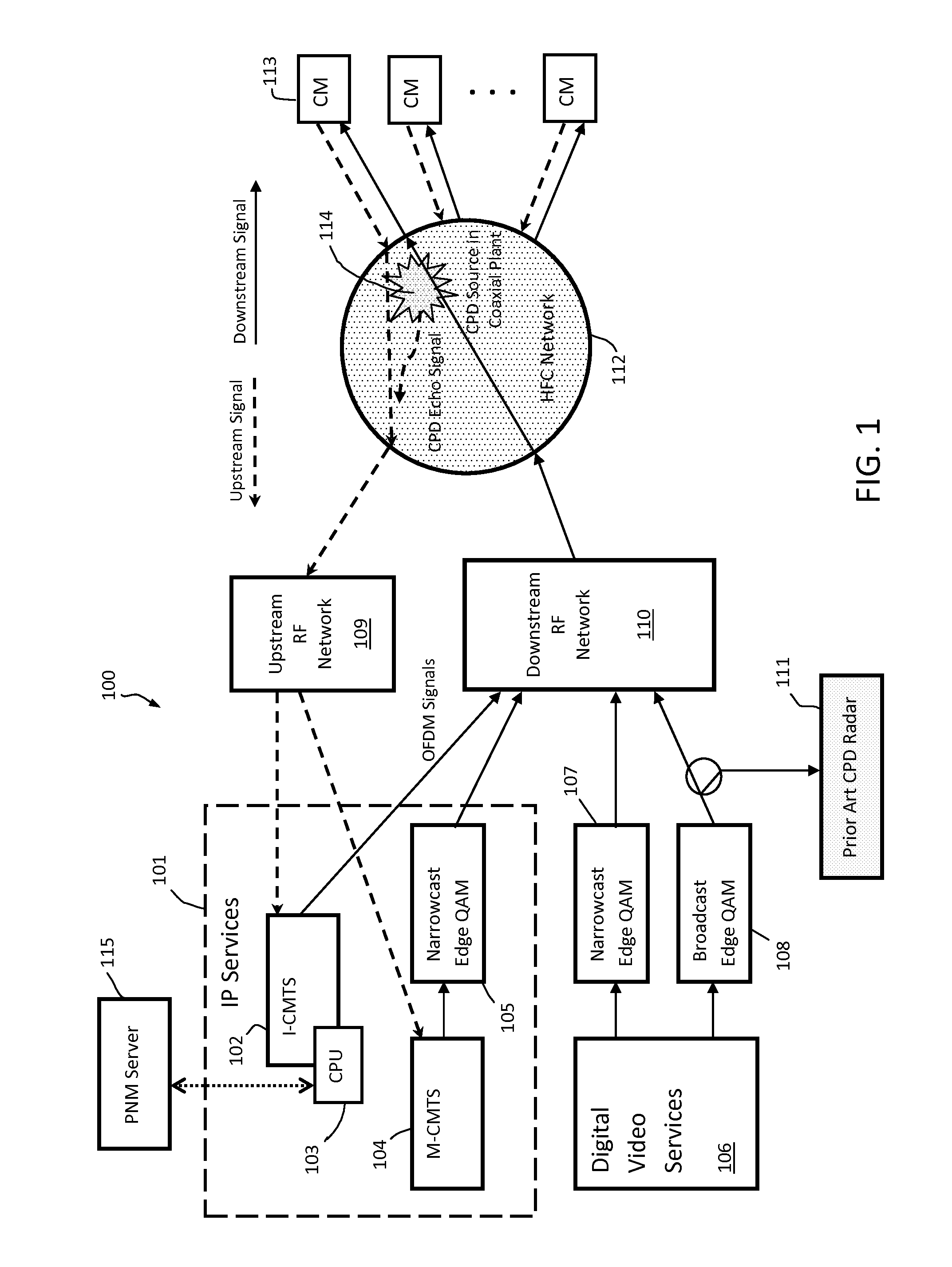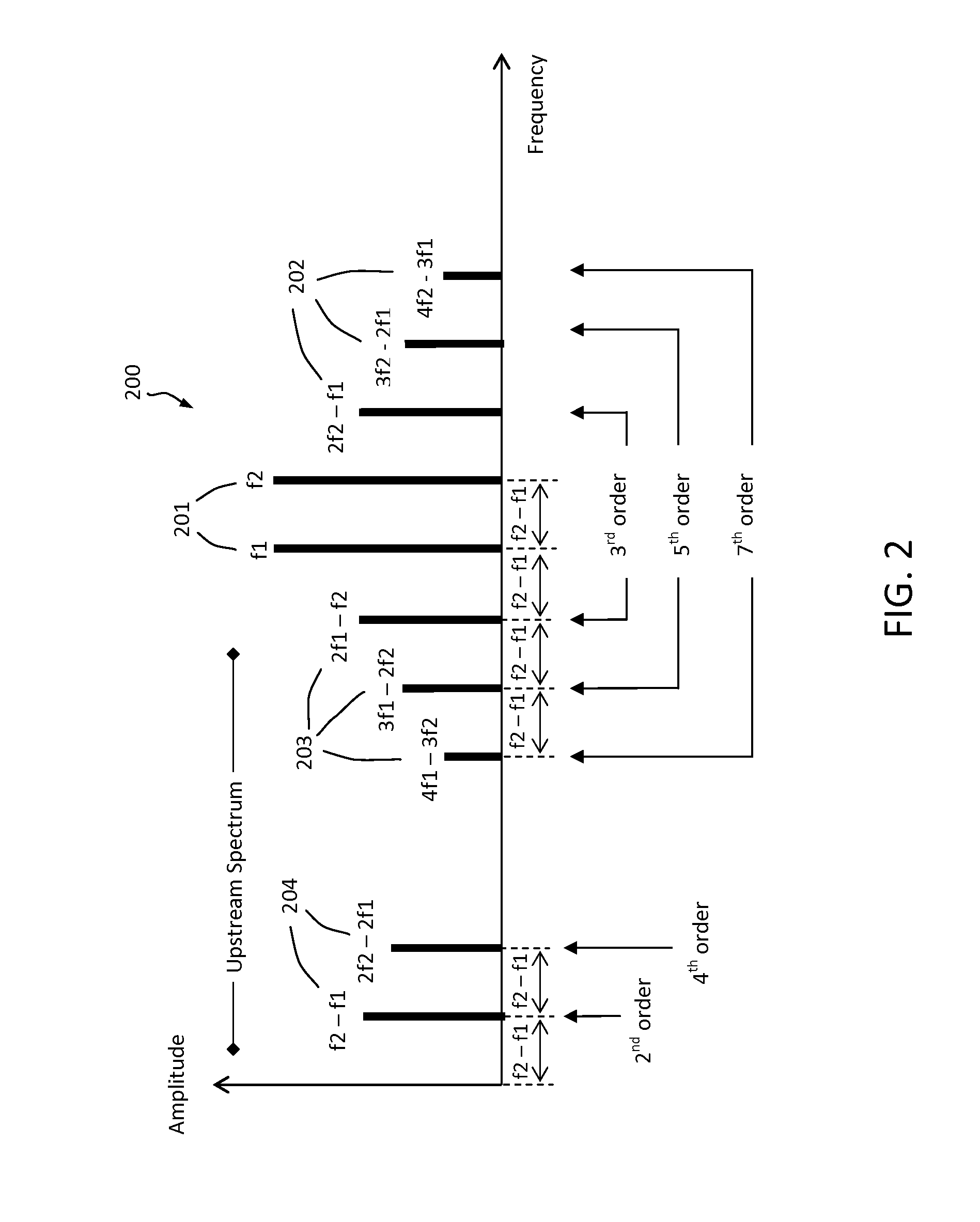Detecting CPD in HFC Network with OFDM Signals
a technology of detecting cpd and hfc network, which is applied in the direction of television system, transmission monitoring, two-way working system, etc., can solve the problems of increasing the difficulty of solving cpd impairment problems, task is a challenge, and common path distortion in modern hfc network
- Summary
- Abstract
- Description
- Claims
- Application Information
AI Technical Summary
Benefits of technology
Problems solved by technology
Method used
Image
Examples
first embodiment
[0054]Now returning to FIG. 5 and time diagrams 511 and 514, the discussion of the first embodiment continues. After moment 510 (downstream transmission of RF version of symbol 501), the CMTS (e.g., I-CMTS 102) and server 115 begin to capture or otherwise acquire (the samples of) an upstream OFDM symbol 505 at a moment 516. The time delay between moments 510 and 516 is set by the CMTS scheduler according to two criteria: (1) upstream symbol 505 should be a quiet probe symbol (see DOCSIS 3.1, Section 9.4.1); and (2) the time delay should be equal to the expected round-trip time of an RF signal transmitted from the CMTS to the fiber node, plus or minus a few microseconds. The first criterion is intended to ensure that symbol 505 is captured when the CMs are not transmitting, so there are no signals interfering with the receipt of a CPD echo signal. The second criterion is intended to ensure that the CPD echo signal (formed by downstream symbol 501 at a CPD source) is captured or other...
second embodiment
[0060]Turning now to second embodiment, the method of which is understood by the flow diagram of FIG. 7 and time diagrams 511 and 515 in FIG. 5. The method of the second embodiment is essentially the same as the method of first embodiment, except that the CMTS captures full-band upstream time-domain samples during a quiet period (instead of an upstream quiet symbol in the OFDM upstream channel). The method steps 701-705 and 708-713 in FIG. 7 are essentially the same as steps 601-605 and 608-613 in FIG. 6, respectively. Also, signals 714-718 in FIG. 7 are the same as signals 614-618 in FIG. 6, respectively. Therefore, the steps in the second embodiment that relate only to the capture of the full-band upstream time-domain samples by the CMTS (and by server 115 via the CMTS) will be described in detail.
[0061]According DOCSIS 3.1 specifications, section 9.4.2, “The CMTS should be capable of providing the time-domain input samples as an alternative to the frequency-domain upstream spectr...
third embodiment
[0064]Turning now to the third embodiment, the method of which is understood by the flow diagram of FIG. 8 and time diagrams 511-513 and 515 in FIG. 5. In a first step 801 (FIG. 8), full-band downstream time-domain samples are captured by a CMTS (e.g., I-CMTS 102) beginning at moment in time 510 (FIG. 5) or by a CM (e.g., CMs 113) at a moment in time 518 (FIG. 5). These samples are retrieved from the CMTS or CM(s) by server 115 for further processing in accordance with the method. As indicated before, the capture of full-band downstream time-domain samples by the CMTS is not a mode required by current DOCSIS specifications. But, technically, it is not a problem to implement such a mode in the CMTS.
[0065]The capture of full-band downstream time-domain samples at a CM is required by DOCSIS 3.1 specifications, but the triggering mode for capturing the samples is not defined. The DOCSIS 3.1 specification states the following with respect to a trigger: “The CM must be capable of locating...
PUM
 Login to View More
Login to View More Abstract
Description
Claims
Application Information
 Login to View More
Login to View More - R&D
- Intellectual Property
- Life Sciences
- Materials
- Tech Scout
- Unparalleled Data Quality
- Higher Quality Content
- 60% Fewer Hallucinations
Browse by: Latest US Patents, China's latest patents, Technical Efficacy Thesaurus, Application Domain, Technology Topic, Popular Technical Reports.
© 2025 PatSnap. All rights reserved.Legal|Privacy policy|Modern Slavery Act Transparency Statement|Sitemap|About US| Contact US: help@patsnap.com



